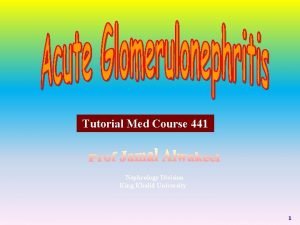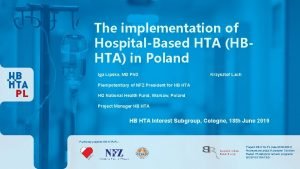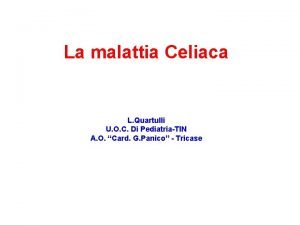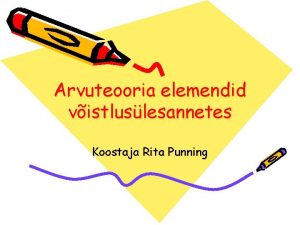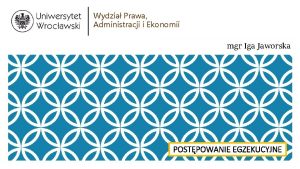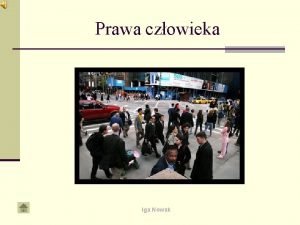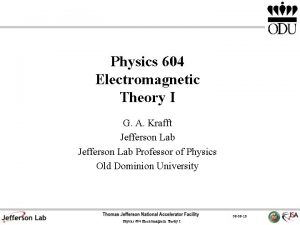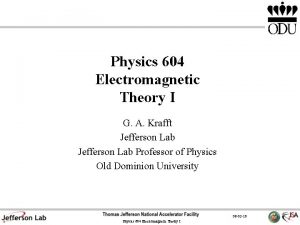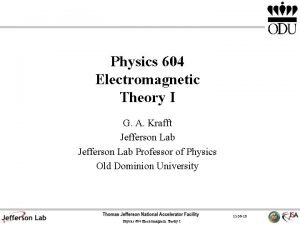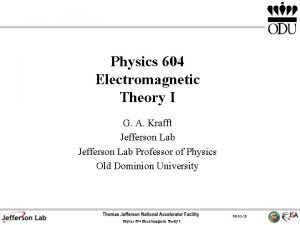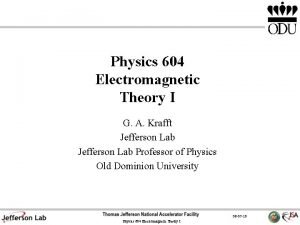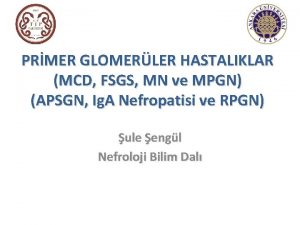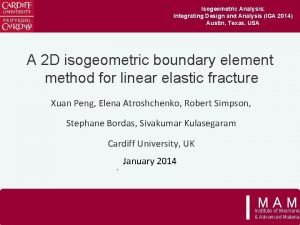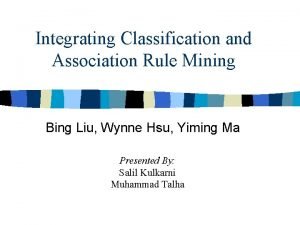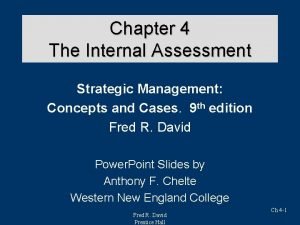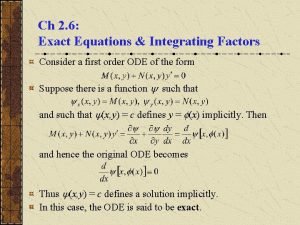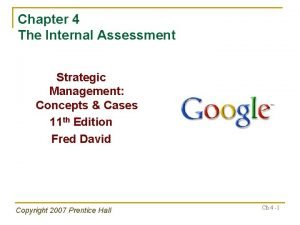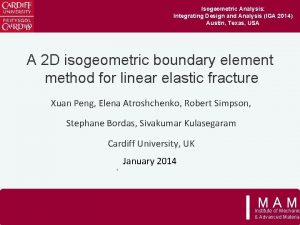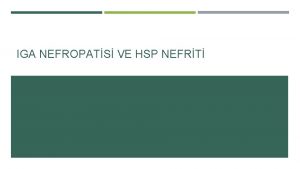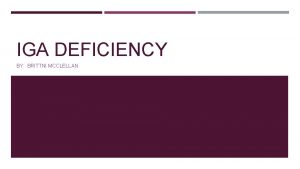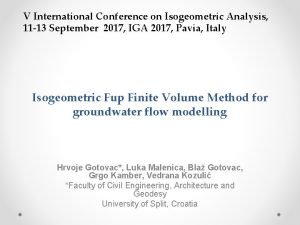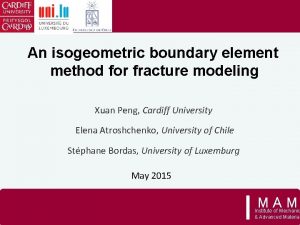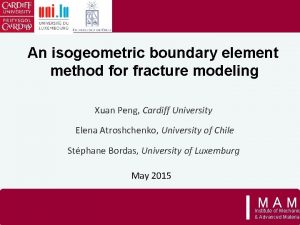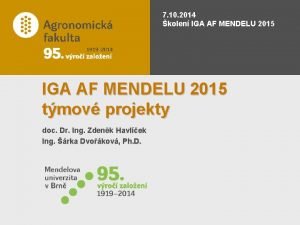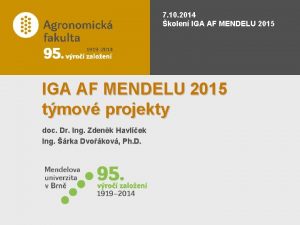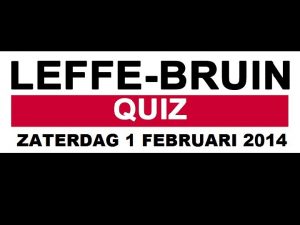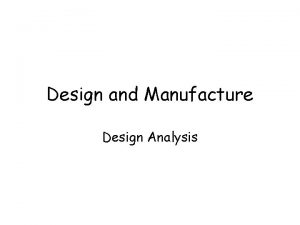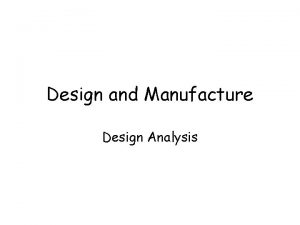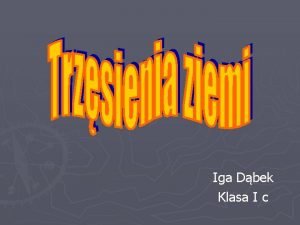Isogeometric Analysis Integrating Design and Analysis IGA 2014






















- Slides: 22

Isogeometric Analysis: Integrating Design and Analysis (IGA 2014) Austin, Texas, USA A 2 D isogeometric boundary element method for linear elastic fracture Xuan Peng, Elena Atroshchenko, Robert Simpson, Stephane Bordas, Sivakumar Kulasegaram Cardiff University, UK January 2014 1 I MAM Institute of Mechanic & Advanced Material

Outline 1/21 ØMotivations ØModeling strategy by IGABEM ØNumerical examples 2

Motivation 2/21 ØGoal • develop a robust, efficient and accurate program system for 3 D fracture simulation and fatigue life prediction based on isogeometric boundary element method (IGABEM) 3

Motivation 3/21 • Bordas&Moran (2006) • Mesh burden • Expensive computational cost 4

Motivation 4/21 Ø BEM is suitable for modeling fracture problems Dimensional reduction Boundary mesh modification High accuracy Ø IGABEM shows more advantages keep the exact geometry Natural fit with BEM Release the mesh burden further Higher order continuity Ø Drawbacks of BEM High complexity in assembling (O(N 2)) and solving (O(N 3)) Full populated matrix Awkward in non-homogeneous, non-linear material 5

Dual BEM for crack modeling 5/21 Ø Displacement BIE: non–crack boundary and one crack surface Ø Traction BIE: the other crack surface 6

NURBS discretisation and collocation 6/21 • Greville Abscissae: Ø Discretised BIEs NURBS(B-Spline) p=2 Discontinous Lagange p=2 7

Singular integration for source points on non-crack surfaces 7/21 • Rigid body motion: 8

Singular integration for source points on crack surfaces 8/21 • Singularity subtraction technique: 9

Evaluation of stress intensity factors 9/21 ØContour integral based methods: • M integral (involving J 1): • J integral (involving J 1 and J 2): Singular in evaluating J 2 10

Algorithm for crack propagation • Space constraint 10/21 , parametric constraint Maximum hoop stress criterion • Localization constraint function • Calculate the moving vector 11

Numerical examples: Griffith crack 11/21 NURBS(B-Spline) p=2 Mode I: Mode II: Uniform mesh refinement No special treatment for crack tip Discontinous Lagange p=2 12

Numerical examples: Griffith crack 12/21 13

Numerical examples: inclined centre crack 13/21 • IGABEM(r) : Uniform mesh (refined tip element) • LBEM: discontinuous Lagrange BEM • SGBEM: symmetric Galerkin BEM, Sutrahar&Paulino (2004) m: number of elements in uniform mesh along the crack surface 14

Numerical examples: inclined centre crack 14/21 • Investigation with varied angle: 15

Numerical examples: arc crack 15/21 • Uniform mesh + refined tip element • Splitting parameter in J integral: 16

Numerical examples: crack growth from rivet holes 16/21 • 12 elements for each circle • 3 elements for initial cracks with tip refinement 17

Numerical examples: crack growth in a spanner 17/21 • Simpson et al (2012) • Contour of Mises stress in elastostatic analysis 18

Numerical examples: crack growth in a spanner 18/21 19

Numerical examples: crack growth in a spanner 19/21 • IGABEM • XFEM 20

References 20/21 • R N Simpson, S P A Bordas, J Trevelyan, and T Rabczuk. A two-dimensional Isogeometric Boundary Element Method for elastostatic analysis. Computer Methods in Applied Mechanics and Engineering, 209212(0): 87100, 2012. • M A Scott, R N Simpson, J A Evans, S Lipton, S P A Bordas, T J R Hughes, and T W Sederberg. Isogeometric boundary element analysis using unstructured T-splines. Computer Methods in Applied Mechanics and Engineering, 254(0): 197221, 2013. • A Portela, M H Aliabadi, and D P Rooke. The dual boundary element method: Effective implementation for crack problems. International Journal for Numerical Methods in Engineering, 33(6): 12691287, 1992. • A Sutradhar and G H Paulino. Symmetric Galerkin boundary element computation of T-stress and stress intensity factors for mixed-mode cracks by the interaction integral method. Engineering Analysis with Boundary Elements, 8(11): 13351350, 2004. • N Moës, J Dolbow, and T Belytschko. A Finite element method for crack growth without remeshing. International Journal for Numerical Methods in Engineering, 46(1): 131150, 1999. 21

Future works 21/21 ØCrack tip enrichment Ø 3 D implementation Acknowledgements: Thanks given to the Framework Programme 7 Initial Training Network Funding under grant number 289361 "Integrating Numerical Simulation and Geometric Design Technology” (FP 7: ITN-INSIST) Thanks for attention 22
 Acute glomerulonephritis causes
Acute glomerulonephritis causes Iga lipska
Iga lipska Scalloping celiachia
Scalloping celiachia Nefropatia por iga
Nefropatia por iga Täisarv millega jaguvad kõik antud arvud
Täisarv millega jaguvad kõik antud arvud Sop iga berasal dari daerah
Sop iga berasal dari daerah Iga jaworska
Iga jaworska Iga nowak
Iga nowak Iga fes
Iga fes Type i
Type i Iga krafft
Iga krafft Iga krafft
Iga krafft Iga krafft
Iga krafft Iga krafft
Iga krafft Iga krafft
Iga krafft Rpgn tipleri
Rpgn tipleri Iga fes
Iga fes Integrating classification and association rule mining
Integrating classification and association rule mining Exemplifies the complexity of relationships
Exemplifies the complexity of relationships Exact equations and integrating factors
Exact equations and integrating factors Integrating science and social studies
Integrating science and social studies Strategic management internal assessment
Strategic management internal assessment Integrating qualitative and quantitative methods
Integrating qualitative and quantitative methods
